Nature holds a profound significance in our lives, offering a wealth of inspiration, beauty, and learning opportunities. Recognizing the value of connecting with nature, educators and individuals have embraced the concept of a nature table. This dedicated space brings the wonders of the natural world into the teaching and learning process. A nature table is a focal point for exploration, observation, and creativity, fostering a deeper understanding and appreciation of the environment.
From Montessori and Waldorf education to incorporating art, meditation, and photography, the nature table has become a versatile tool in enhancing the educational experience. In this article, we delve into the importance of nature tables and explore various ways they enrich the teaching-learning journey.
The Significance of Nature Tables in the Teaching-Learning Process
The significance of nature tables in the teaching-learning process cannot be overstated. These dedicated spaces are powerful tools for educators to enhance the educational experience and foster a deeper connection between students and the natural world.
Here are some key reasons why nature tables are of great importance:
- Enhancing sensory experiences: Nature tables provide a hands-on and immersive learning environment where students can engage their senses. By touching, feeling, and observing objects from nature, students develop a heightened sense of curiosity and exploration, leading to a more profound understanding of the subject matter.
- Promoting hands-on learning and inquiry-based exploration: Nature tables encourage active learning through direct interaction with natural materials. Students can investigate, manipulate, and experiment with objects, fostering a sense of discovery and encouraging critical thinking skills.
- Integrating interdisciplinary subjects: Nature tables facilitate the integration of multiple disciplines. Students can explore scientific concepts through observing natural specimens, practice art and creativity by incorporating nature-inspired crafts, and even engage in storytelling and language development inspired by the natural world.
- Nurturing environmental stewardship: By bringing nature into the classroom, nature tables instill a sense of responsibility and environmental consciousness in students. Interacting with natural objects fosters a deeper appreciation for the environment, encouraging students to become advocates for protecting and conserving nature.
- Supporting individualized and differentiated learning: Nature tables accommodate diverse learning styles and abilities. Students can engage with the materials at their own pace, making personal connections and deepening their understanding in ways that resonate with their unique learning preferences.
Techniques to Organize and Display Nature Table Items
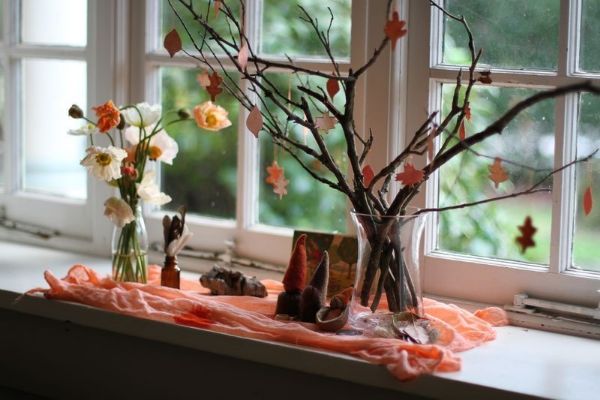
Categorization
Arrange the nature table items into categories based on their characteristics, such as rocks, leaves, shells, or animal artifacts.
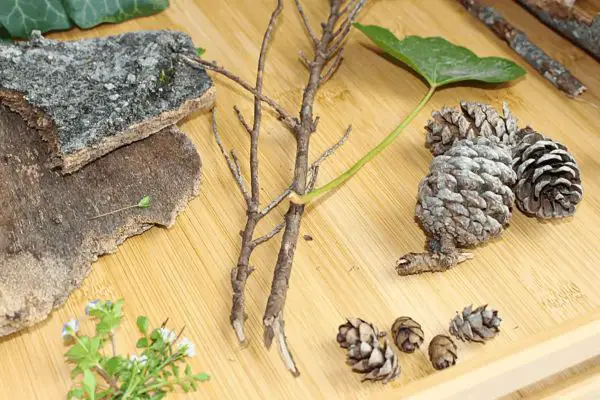
Clear Containers
Use clear jars, boxes, or trays to store and display smaller nature items, allowing students to see and access them easily.
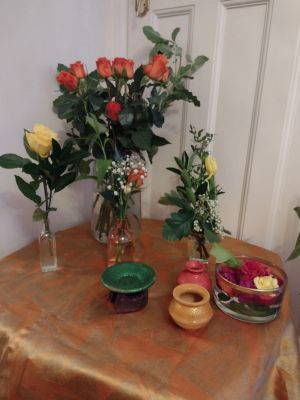
Labels and Descriptions
Attach labels or small signs with descriptions or information about each item, providing educational context and encouraging further exploration.
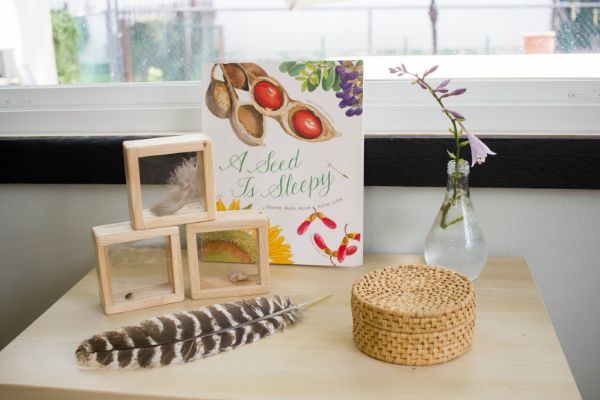
Seasonal Rotation
Update the nature table regularly to reflect the changing seasons, introducing new items and removing ones that are no longer relevant.
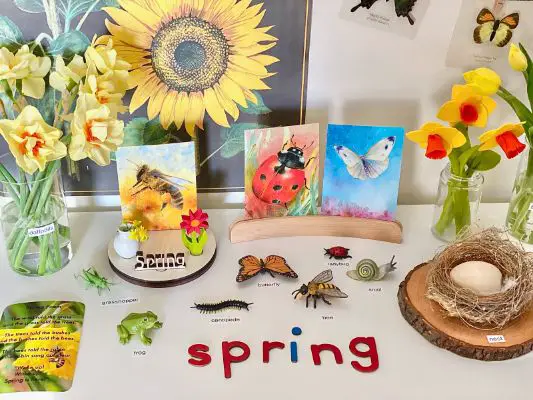
Height Variation
Create visual interest by varying the height of displayed items using stands, risers, or natural elements like logs or branches.
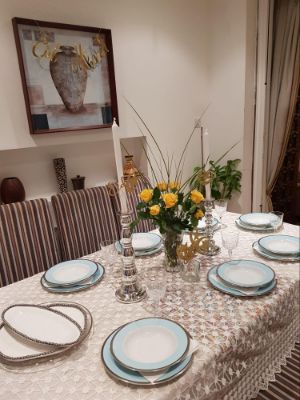
Natural Backdrops
Use natural materials like moss, sand, or pebbles as a backdrop to enhance the display and create a visually appealing setting.
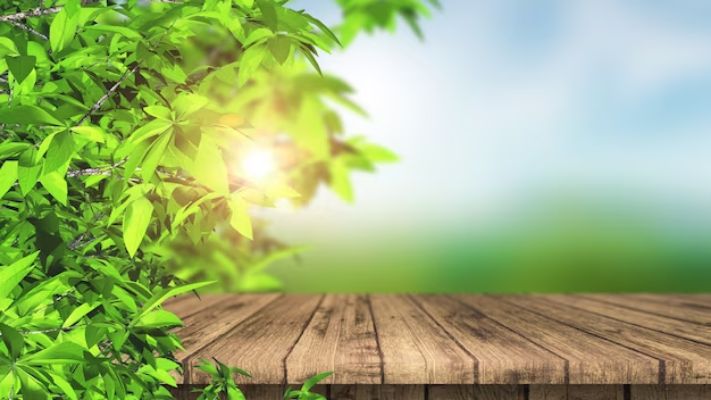
Color Coordination
Arrange items based on their colors, creating an aesthetically pleasing and visually cohesive arrangement.
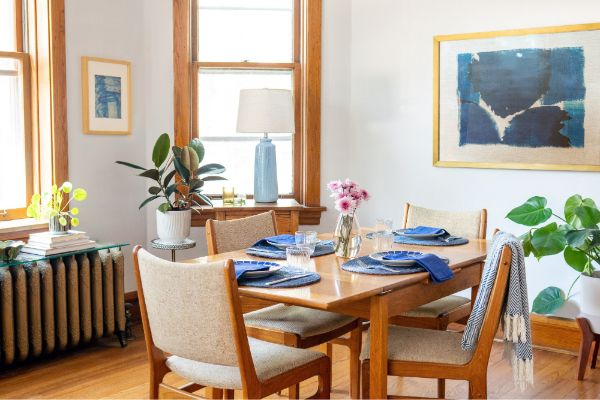
Hands-On Accessibility
Ensure students can easily access and handle items on the nature table, allowing for interactive exploration and engagement.
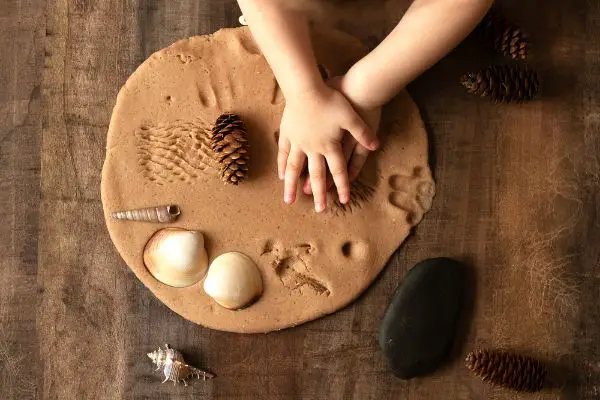
Thoughtful Arrangement
Arrange items deliberately, considering factors like size, shape, texture, and thematic relationships to create an engaging and organized display.
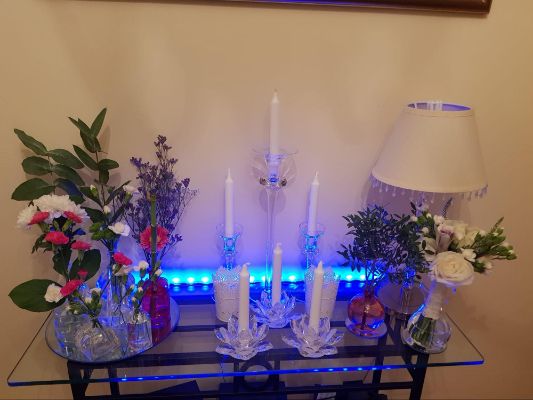
Interactive Elements
Incorporate interactive elements like magnifying glasses, small notebooks, or drawing materials for students to interact with and record their observations.
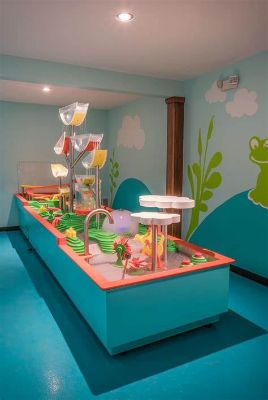
10 Nature Tables as Instructional Materials Ideas for Teachers
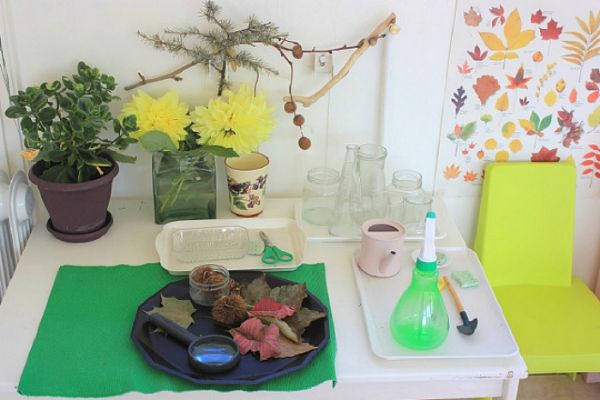
Fossil Exploration
Display fossils and provide resources for students to learn about prehistoric life and geological history.
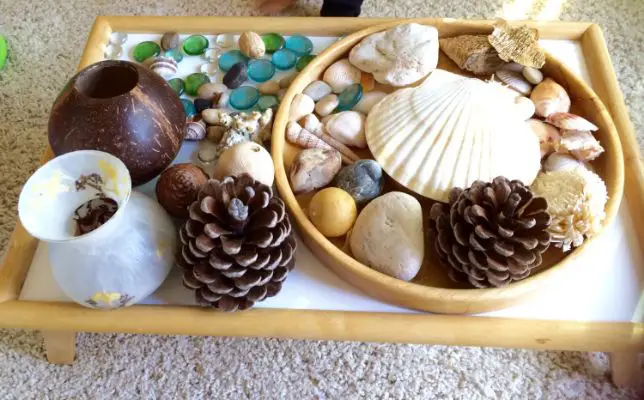
Insect Study
Showcase preserved insects, magnifying glasses, and reference materials for students to observe and learn about different insect species.
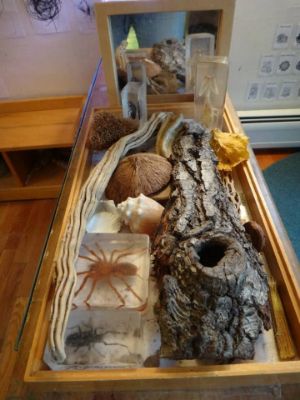
Leaf Identification
Present a variety of preserved leaves alongside field guides or identification charts for students to practice leaf identification skills.
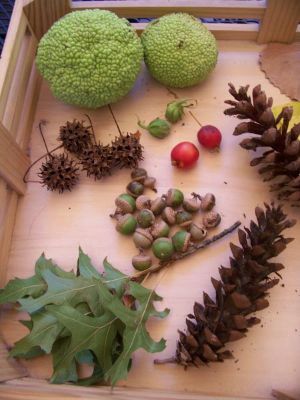
Rock and Mineral Collection
Display a collection of rocks and minerals, labeling them with their names and properties to introduce geology concepts.
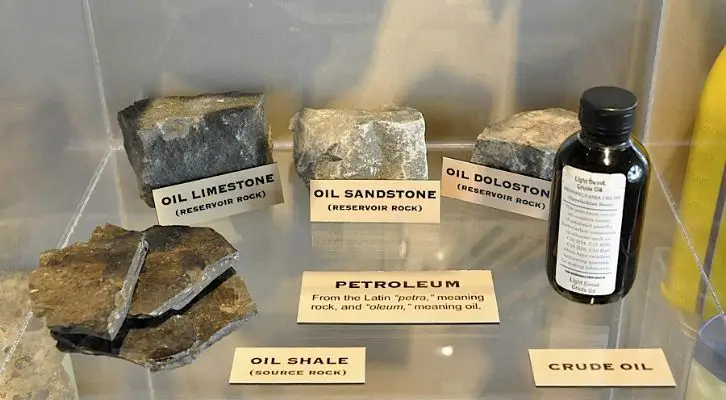
Weather Instruments
Include thermometers, barometers, and rain gauges to spark discussions and observations about weather patterns.
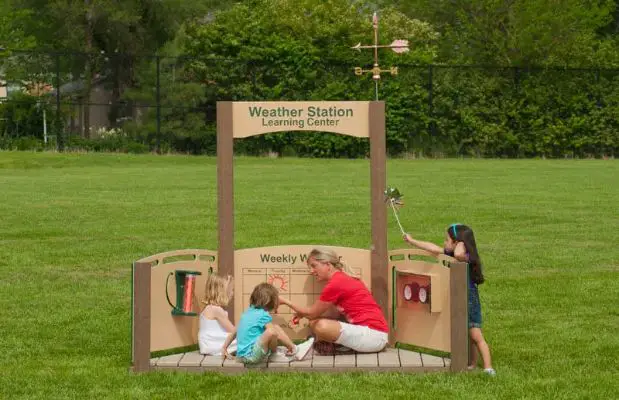
Bird’s Nest Display
Gather empty bird nests and materials commonly used by birds for nesting to teach students about bird behavior and habitats.
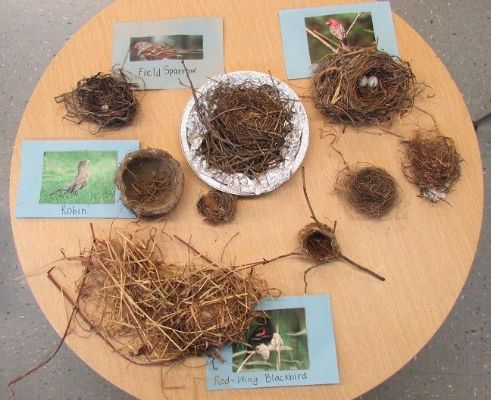
Seed Bank
Provide a collection of different seeds for students to explore and learn about plant reproduction and dispersal.
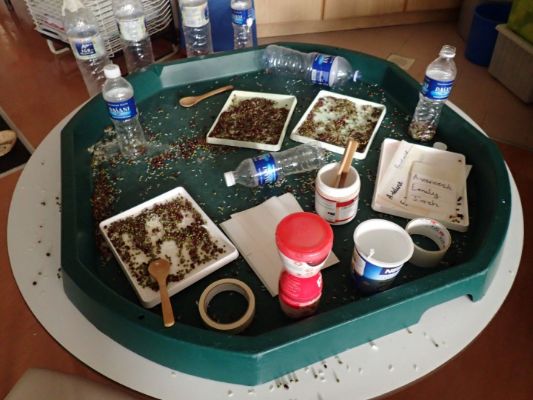
Nature Journals
Offer blank journals and drawing materials for students to document their observations, sketches, and reflections during outdoor exploration.
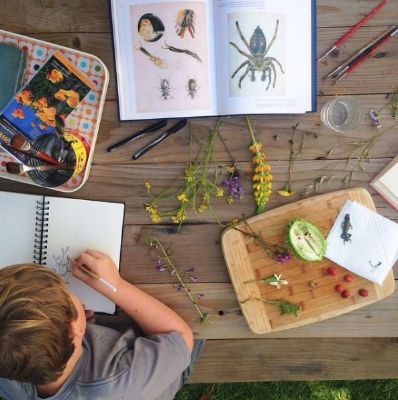
Anatomy Models
Showcase models or replicas of plants, animals, or human anatomy to facilitate discussions and hands-on learning about living organisms.
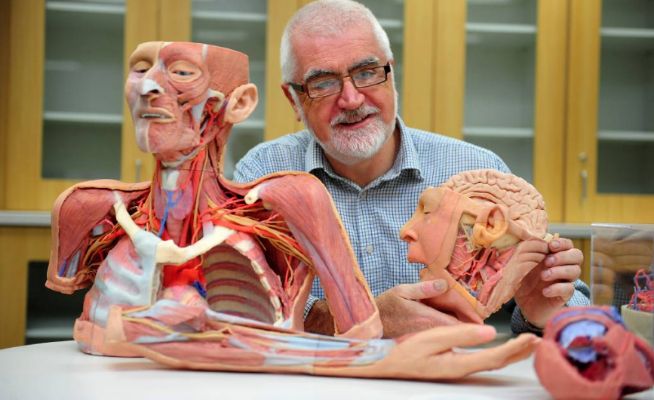
Natural Resources Study
Display examples of natural resources like rocks, water samples, and soil samples to introduce concepts of Earth’s resources and their uses.
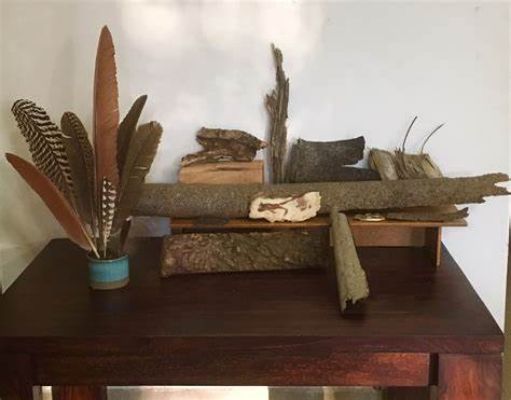
10 Montessori Nature Table Ideas
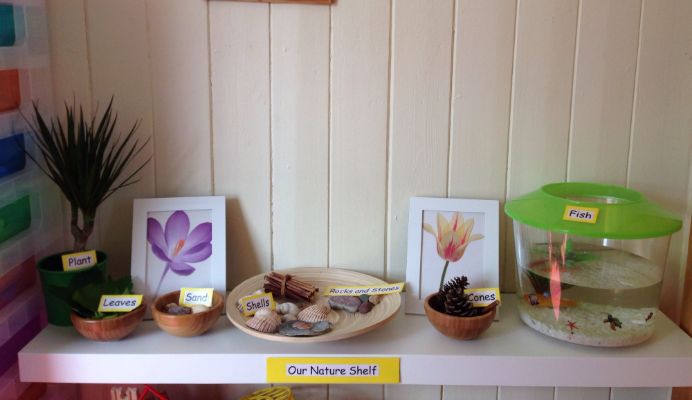
Seasonal Treasures
Display natural objects that reflect the current season, such as colorful autumn leaves or spring-blooming flowers.
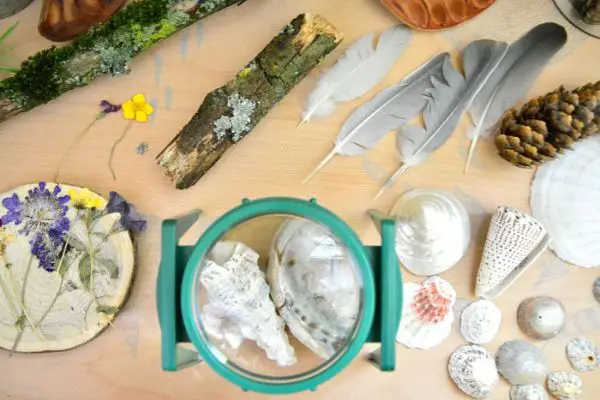
Animal Habitats
Create miniature habitats with rocks, soil, and plants, showcasing the natural homes of animals like frogs, birds, or insects.
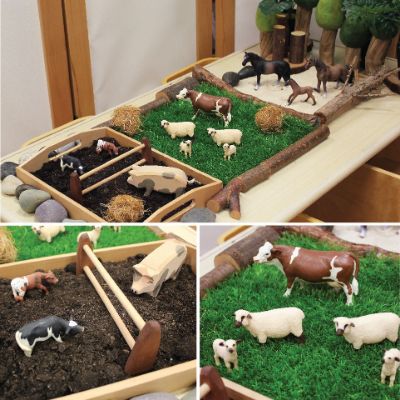
Nature’s Textures
Gather various natural materials with different textures, such as smooth stones, rough bark, soft feathers, and velvety leaves.
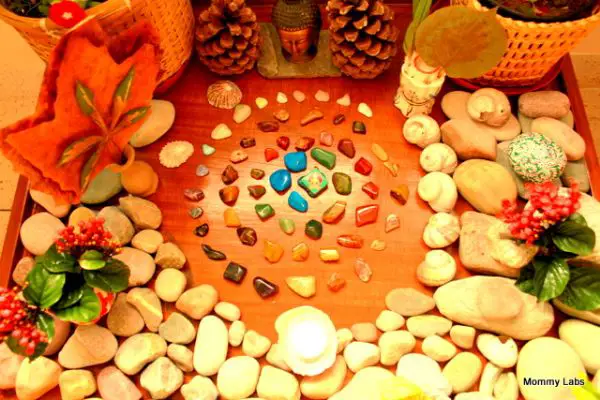
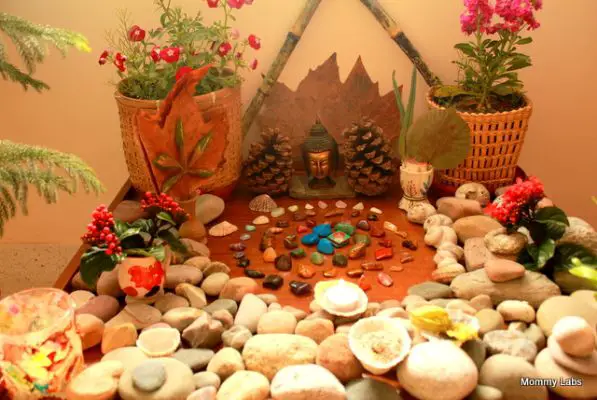
Plant Life Cycle
Present stages of a plant’s life, from seeds to seedlings and full-grown plants, along with corresponding pictures or diagrams.
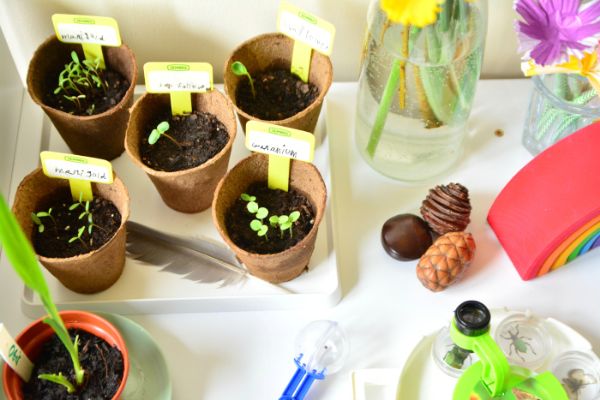
Sensory Garden
Arrange aromatic herbs, fragrant flowers, and tactile plants to engage children’s senses of smell, touch, and sight.
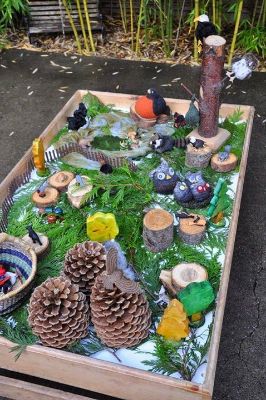
Earth’s Elements
Showcase natural materials representing the four elements—earth, air, water, and fire—such as rocks, seashells, feathers, and candles.
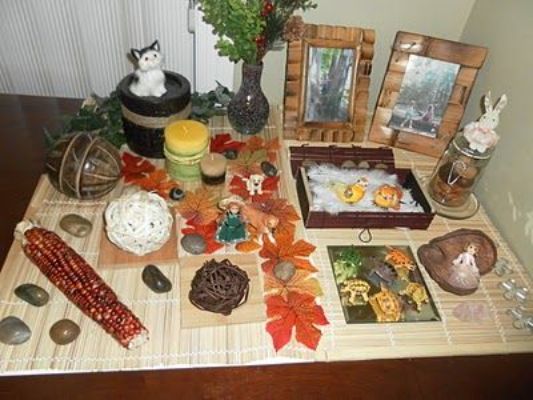
Seasonal Fruits and Vegetables
Feature locally sourced produces that changes seasons, introducing children to seasonal eating.
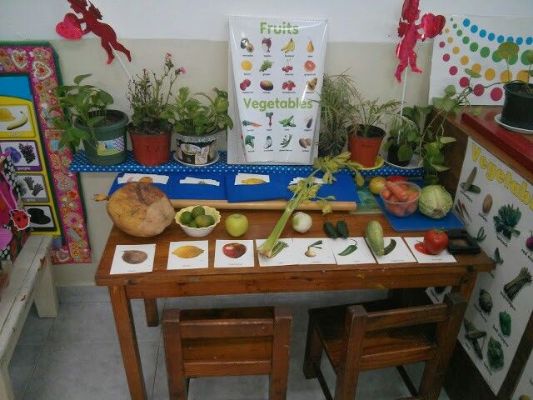
Nature’s Patterns
Display objects with intriguing patterns found in nature, like seashells with spirals, pinecones with Fibonacci sequences, or symmetrical leaves.
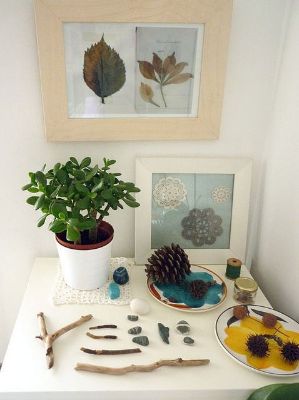
Birdwatching Station
Set up binoculars, bird identification books, and pictures of local birds to encourage children to observe and identify birds.
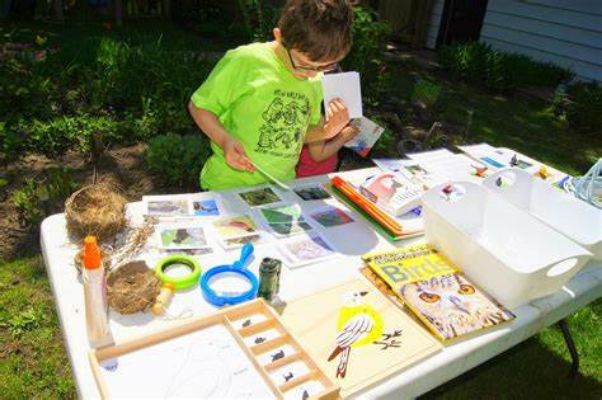
Sound Exploration
Include items that produce nature-inspired sounds, such as seashells for ocean-like waves or rain sticks for the sound of rainfall.
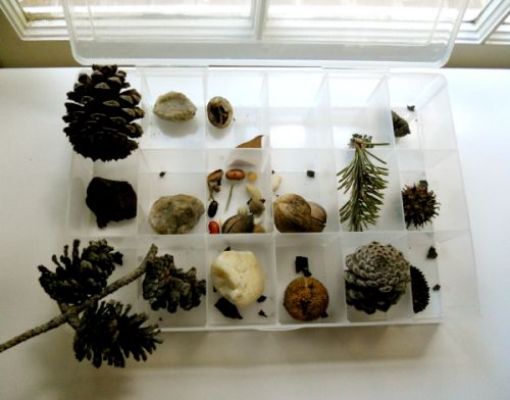
10 Artistic Expression at the Nature Table Ideas
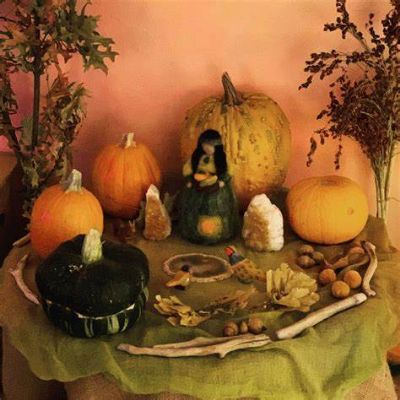
Nature-Inspired Collage
Encourage children to create collages using leaves, flowers, feathers, and other natural materials.
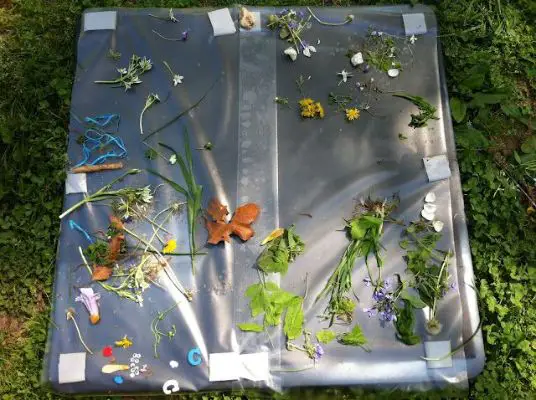
Nature Printing
Explore the technique of nature printing by using leaves, flowers, and branches as stamps.
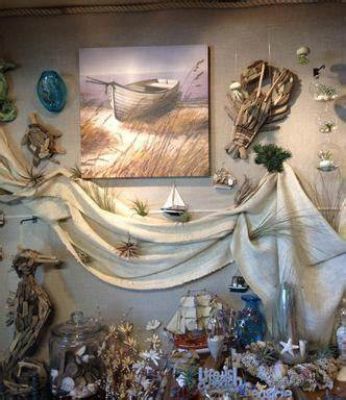
Land Art Sculptures
Invite children to use natural materials to build sculptures and structures in the style of land art.
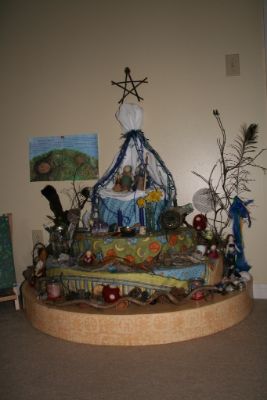
Botanical Drawings
Provide sketchbooks and art supplies for children to draw detailed observations of plants and flowers.
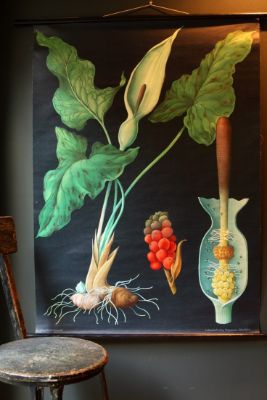
Leaf Rubbings
Place various leaves on paper and have children use crayons or pencils to create leaf rubbings, capturing their textures and shapes.
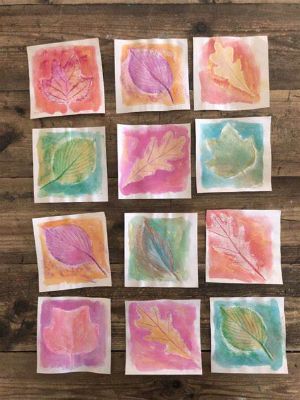
Nature Weaving
Introduce weaving using natural materials like twigs, grasses, and colorful yarns to create unique textures and patterns.
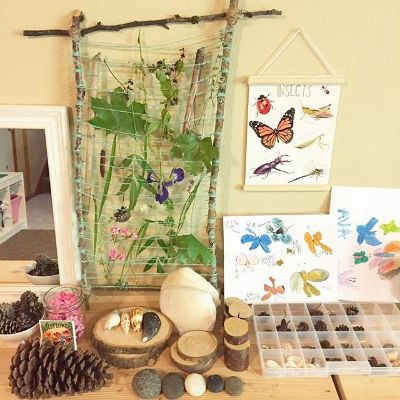
Natural Dyeing
Experiment with natural dyes made from plants and flowers to create vibrant colors on fabric or paper.
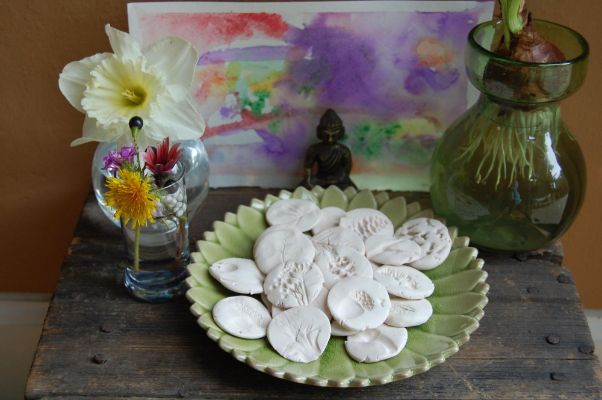
Nature Mandalas
Guide children in arranging natural materials in circular patterns to create stunning mandalas.
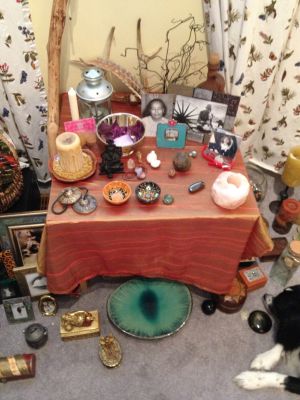
Rock Painting
Encourage children to paint rocks with vibrant colors and patterns, turning them into nature-inspired works of art.

Nature Photography
Provide cameras or smartphones for children to capture the beauty of nature, focusing on close-ups, landscapes, and patterns.
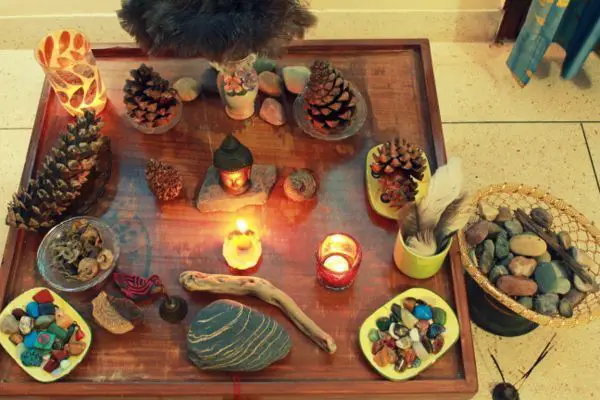
20 Nature Table Activities and Projects
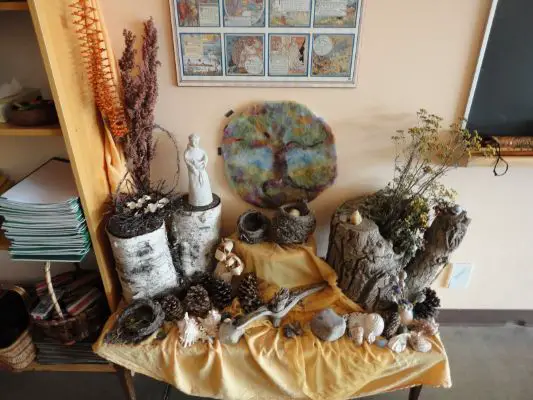
Leaf Rubbings
Use leaves from the nature table to create beautiful leaf rubbings using crayons or colored pencils.
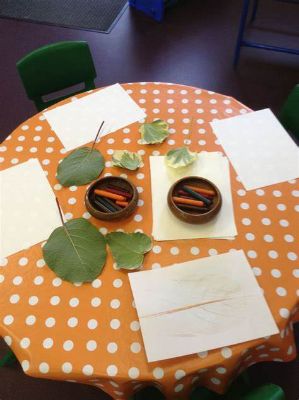
Nature Collage
Create collages using natural materials like leaves, flowers, and twigs collected outdoors.
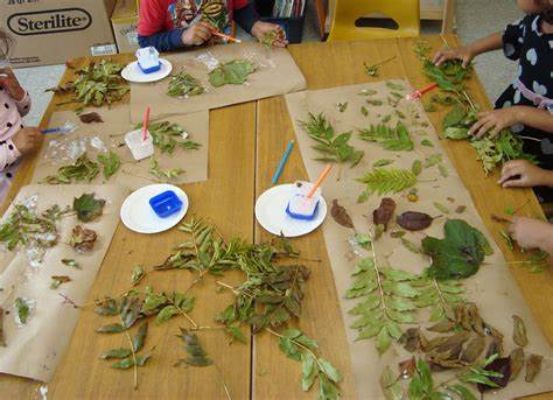
Rock Painting
Using acrylic paints or markers, decorate rocks with colorful patterns, designs, or inspirational messages.
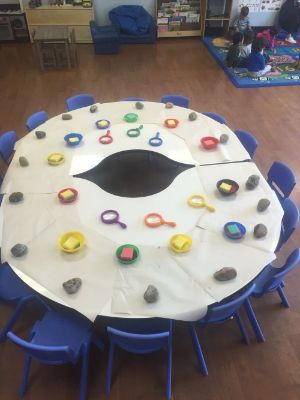
Nature Prints
Make prints using natural objects like leaves, flowers, and ferns by pressing them onto paper or fabric coated with paint.
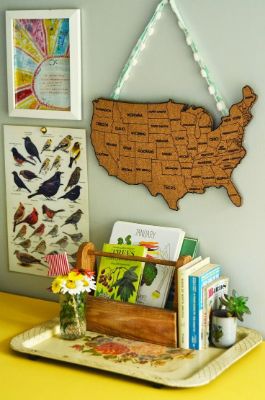
Seed Bombs
Mix clay, soil, and wildflower seeds to create seed bombs that can be thrown or planted outdoors.
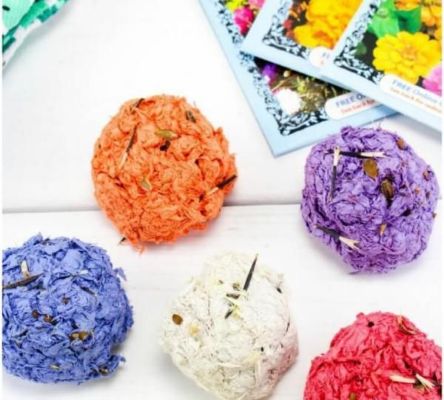
Nature Weaving
Weave together natural materials like twigs, grasses, or yarn to create small, nature-inspired weavings.
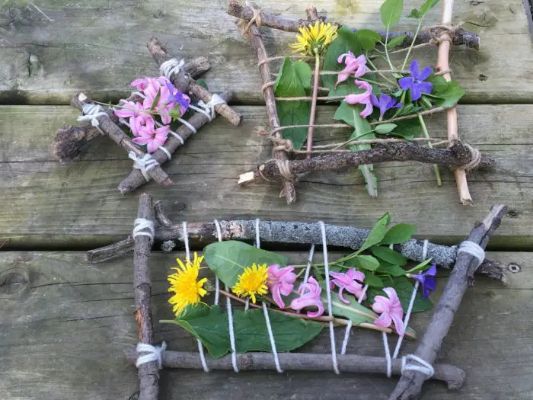
Pinecone Bird Feeders
Attach a string to a pinecone and cover it with peanut butter or birdseed, creating a bird feeder to hang outside.
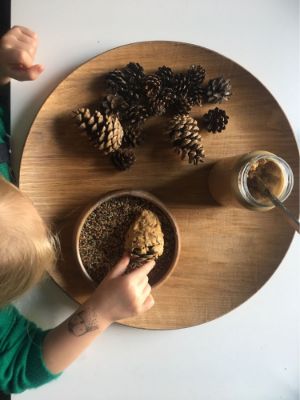
Nature Masks
Use leaves, petals, and other natural materials to create masks representing animals or mythical creatures.
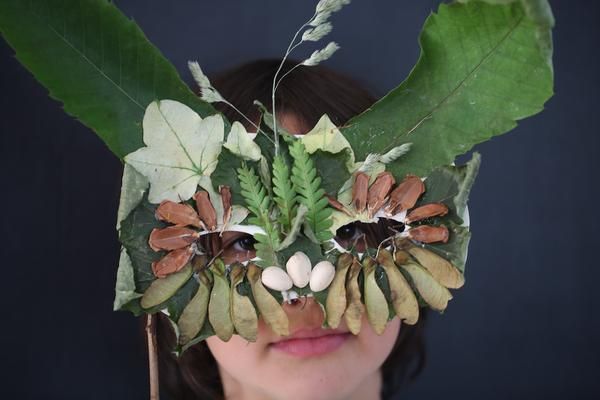
Twig Picture Frames
Collect small twigs and use them to create unique picture frames for nature-themed artwork or photographs.
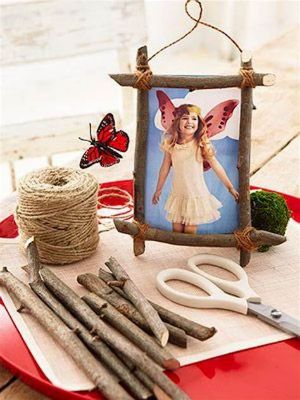
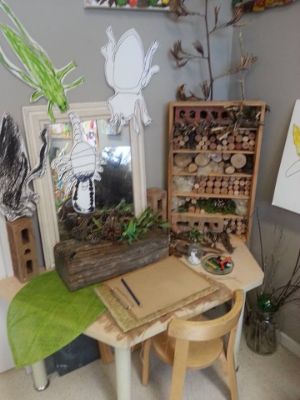
Nature Mobiles
Create mobiles using found objects like feathers, shells, and pinecones, hanging them from a branch or hoop.
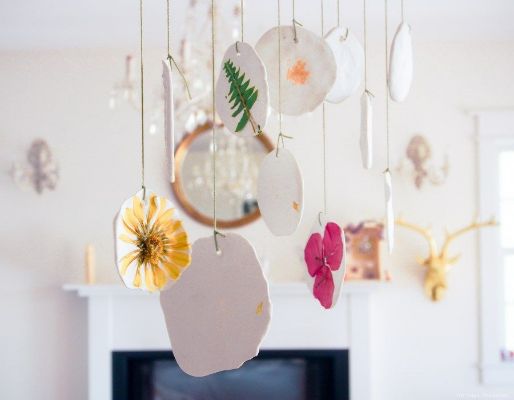
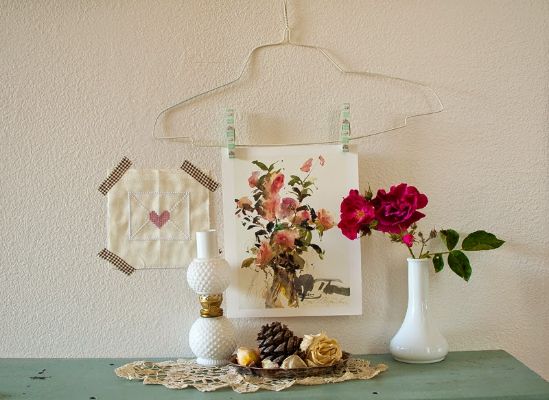
Nature Dioramas
Use a shoebox or small container to create a mini nature scene with moss, rocks, and small figurines.
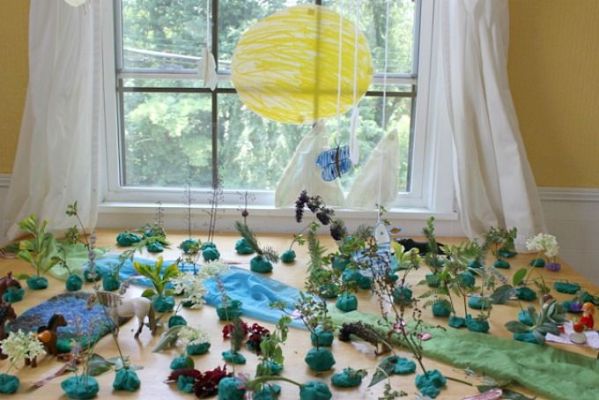
Nature-inspired Jewelry
Make bracelets, necklaces, or earrings using seeds, shells, or dried flowers.
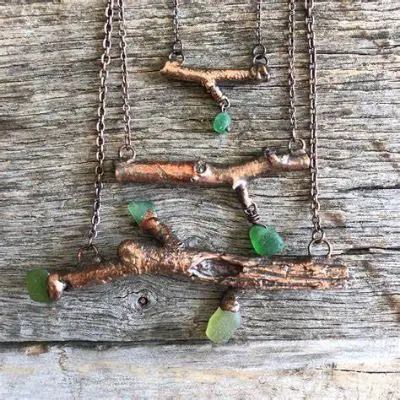
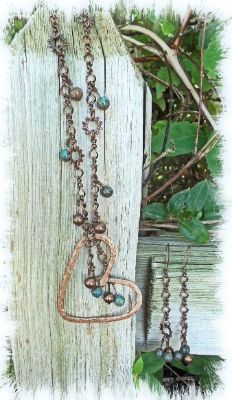
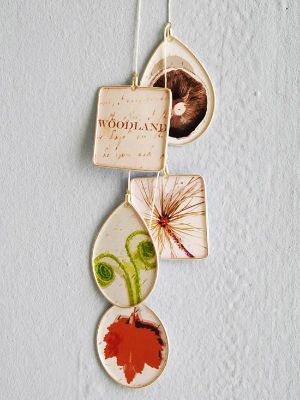
Nature Mandalas
Arrange natural objects like petals, leaves, and stones in intricate circular patterns to create nature mandalas.
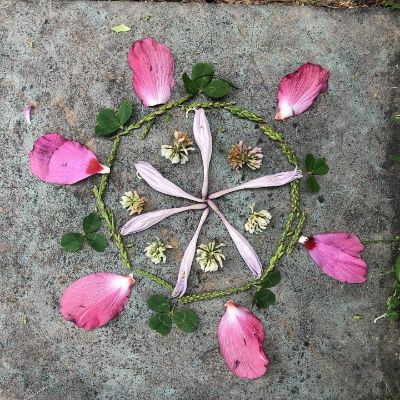
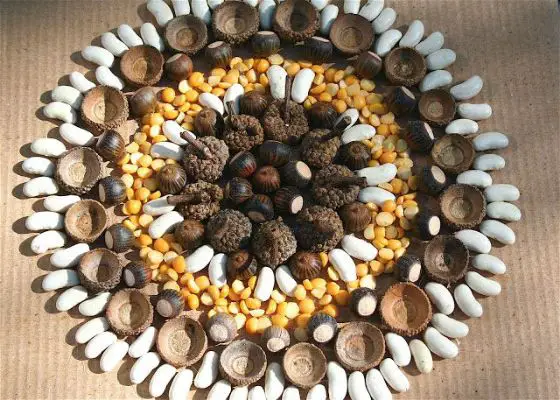
Nature Suncatchers
Press flowers or leaves between clear contact paper or laminate sheets to create colorful suncatchers in windows.
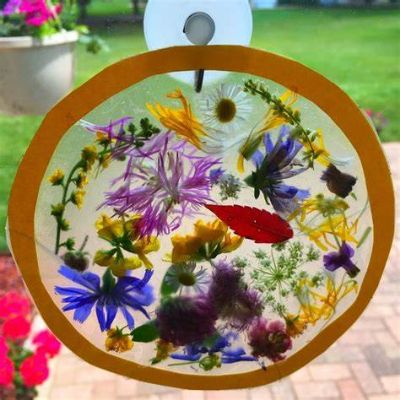
Nature Terrariums
Create small, self-sustaining ecosystems in glass jars using soil, plants, and small decorative elements.
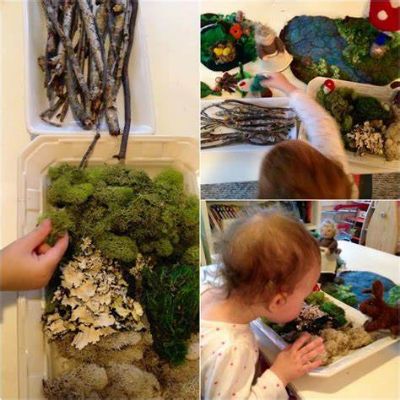
Nature Journaling
Encourage students to create a nature journal or diary to record observations, sketches, and reflections from outdoor explorations.
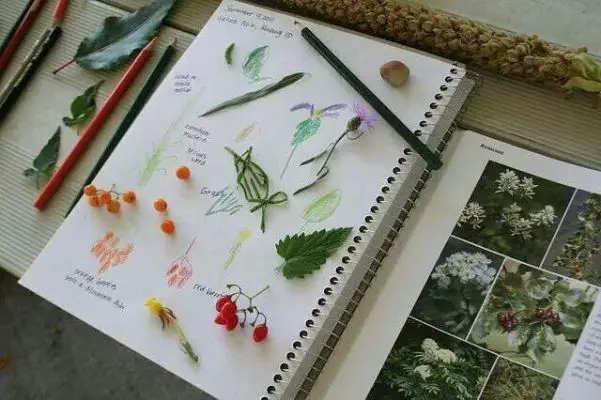
Nature Poetry
Inspire students to write nature-inspired poems, capturing their experiences and emotions related to the natural world.
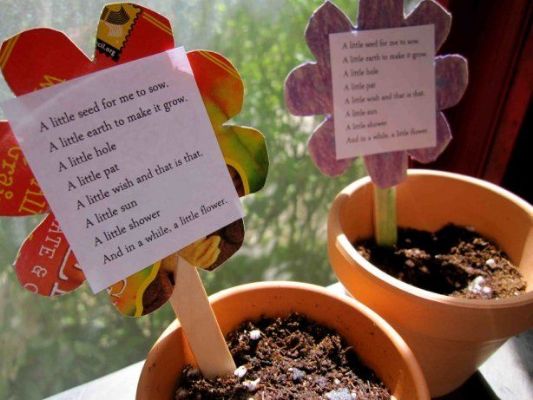
Nature Photography
Provide cameras or smartphones for students to take photographs of natural elements, capturing their unique perspectives.
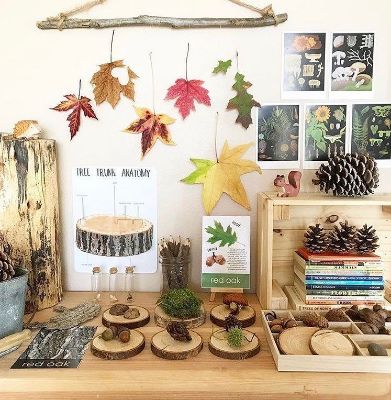
Nature-inspired Storytelling
Use objects from the nature table as prompts for storytelling, encouraging students to create narratives inspired by the natural world.
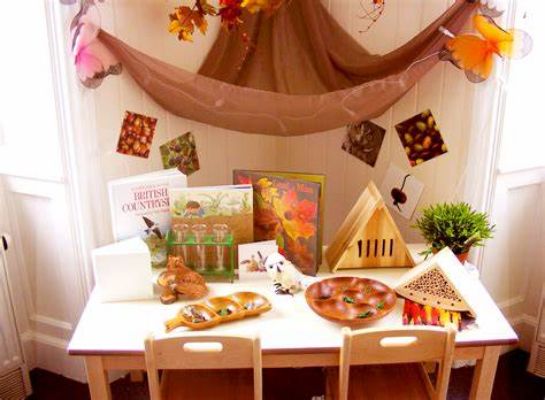
Nature-inspired Sculptures
Use clay, playdough, or recycled materials to create sculptures inspired by natural forms like animals, plants, or landscapes.
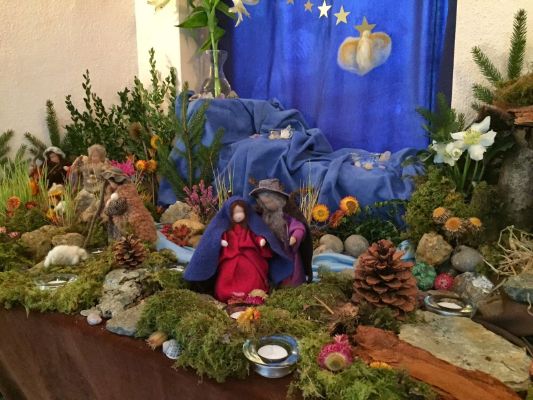
How To Conduct Scientific Experiments Or Nature-Themed Experiments On Nature Tables?
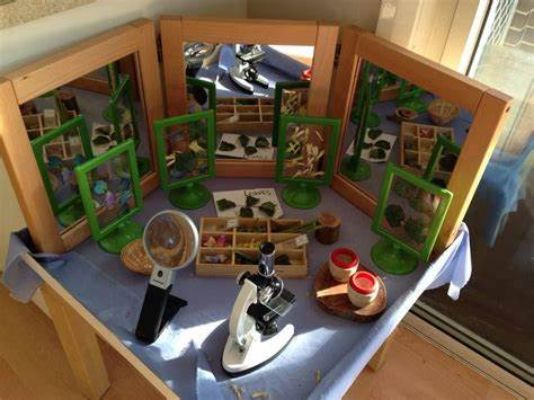
Conducting scientific or nature-themed experiments on a nature table can be a hands-on and engaging way for students to explore scientific concepts. Here’s how to conduct such experiments:
Select an Experiment
Choose an experiment that aligns with the scientific concepts or nature themes you want to explore. Consider experiments related to plants, animals, weather, or the properties of natural materials.
Gather Materials
Identify the materials and equipment needed for the experiment. Ensure you have all the necessary items readily available on the nature table.
Set Up the Experiment
Arrange the materials and equipment in an organized manner on the nature table. Clearly label each item and provide any written instructions or guidelines for the experiment.
Explain the Experiment
Briefly introduce the experiment to the students, explaining the purpose, hypothesis, and expected outcomes. Emphasize safety precautions and any specific procedures they need to follow.
Guided Exploration
Facilitate the experiment by guiding students through the process. Encourage them to observe, measure, record data, and make predictions as they experiment.
Record Observations
Provide notebooks or observation sheets for students to record their observations, measurements, and any changes they notice during the experiment. This promotes scientific inquiry and documentation skills.
Encourage Discussion
Foster discussion among students about their observations and findings. Ask open-ended questions to stimulate critical thinking and encourage them to analyze the results.
Reflect and Analyze
Have students reflect on the experiment and analyze their data. Encourage them to draw conclusions based on their observations and compare their findings to their initial predictions or hypotheses.
Clean Up and Reflect
Ensure students clean up the experiment area, properly dispose of any materials, and return the nature table to its original state. Encourage them to reflect on their experience and share what they learned.
Repeat and Expand
Encourage students to conduct additional experiments or variations of the initial experiment, building on their previous knowledge and exploring different aspects of the scientific concept or nature theme.
By conducting scientific or nature-themed experiments on a nature table, students can actively engage in the scientific method, develop critical thinking skills, and deepen their understanding of the natural world.
Nature Tables in Waldorf Education
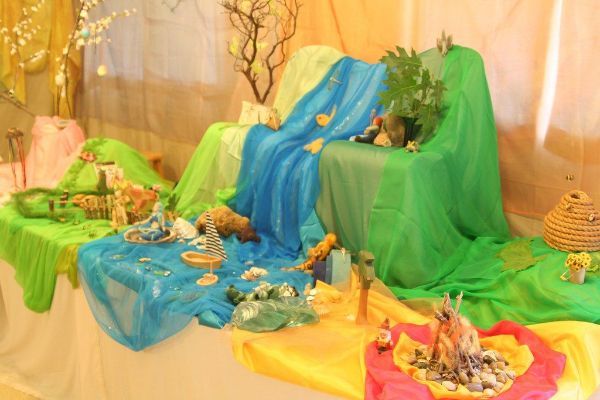
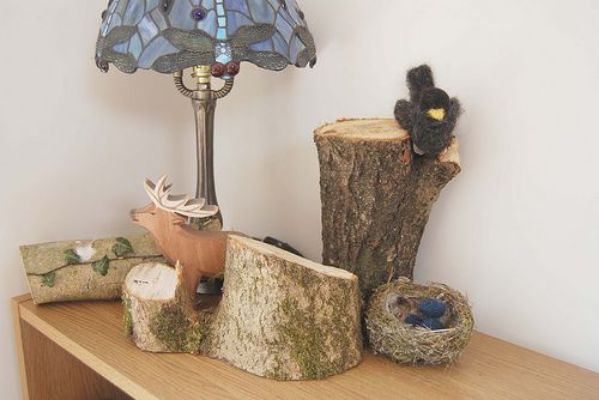
Here’s how nature tables are incorporated into Waldorf education:
Nature Observation
Waldorf education strongly emphasizes direct observation of nature. Nature tables provide a dedicated space for students to closely observe and interact with natural materials, fostering a deep connection with the natural world.
Seasonal Awareness
Waldorf education recognizes the importance of seasonal rhythms. Nature tables are designed to reflect the changing seasons, with plants, flowers, leaves, and natural objects corresponding to the time of year. This helps students develop an understanding of seasonal changes and the interconnectedness of the natural world.
Hands-on Learning
Waldorf education promotes hands-on, experiential learning. Nature tables provide a tactile and sensory experience for students, who can touch, feel, and manipulate natural materials, fostering a sense of wonder and curiosity.
Imagination and Storytelling
Nature tables often incorporate elements that inspire storytelling and imaginative play. Figures, dolls, or animals can be placed on the table, allowing students to create narratives and engage in imaginative play, which supports language development and creativity.
Integration of Subjects
Nature tables in Waldorf education serve as a bridge between different subject areas. Students may explore topics related to science, language arts, art, and cultural studies through their interactions with the nature table. For example, they may study plant life cycles, create nature-inspired artwork, or learn about different cultural traditions related to nature.
Reverence for Nature
Waldorf education promotes a sense of reverence and respect for nature. Nature tables provide a space where students can develop a deep appreciation for the beauty and diversity of the natural world, fostering a sense of environmental stewardship.
10 Meditation and Mindfulness at the Nature Table Ideas
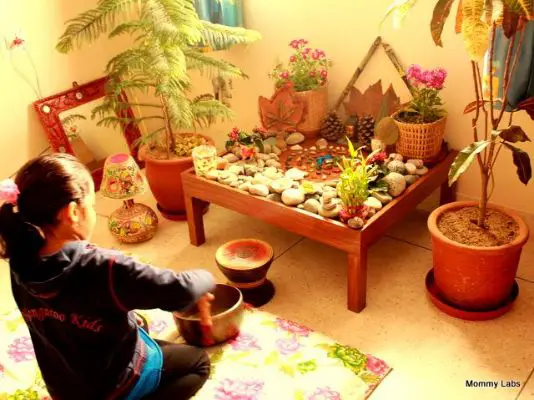
Nature Sounds Meditation
Create a peaceful atmosphere with recordings or instruments that produce calming nature sounds like flowing water, birdsong, or gentle wind.

Guided Imagery
Use visual prompts, such as pictures of serene natural landscapes, to guide students through guided imagery exercises, fostering relaxation and mindfulness.
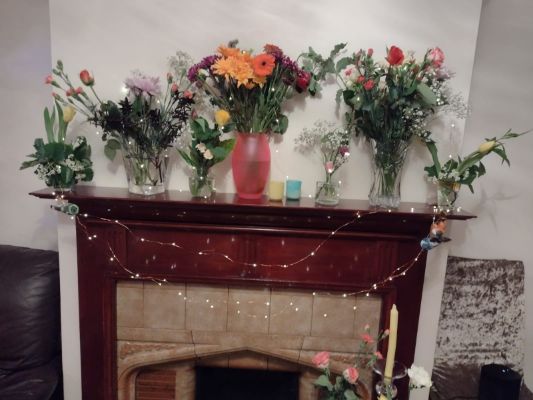
Sensory Exploration
Encourage students to explore natural materials on the nature table through mindful touch, smell, and observation, focusing on the present moment.
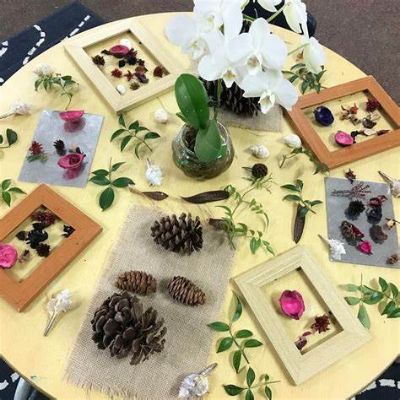
Breathing Exercises
Incorporate breathing techniques like deep belly breathing or counting breaths to promote relaxation and mindfulness in the natural setting of the table.

Mindful Observation
Invite students to sit quietly and observe the intricate details of natural objects on the table, cultivating focused attention and awareness.

Gratitude Reflections
Prompt students to reflect on and express gratitude for the natural elements displayed on the nature table, fostering a sense of appreciation and connection.

Nature Mandala Meditation
Guide students in creating temporary mandalas using natural materials on the table, encouraging a meditative state of mindfulness and creativity.
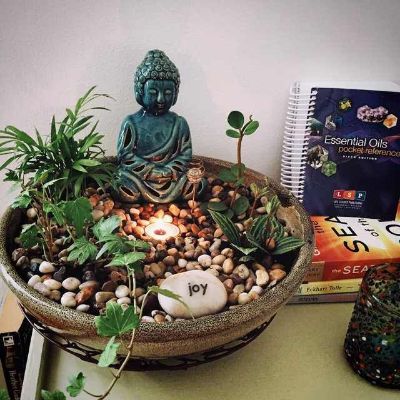
Mindful Walking
Set up a small pathway or labyrinth using natural materials around the nature table, inviting students to walk and focus on each step and sensation mindfully.
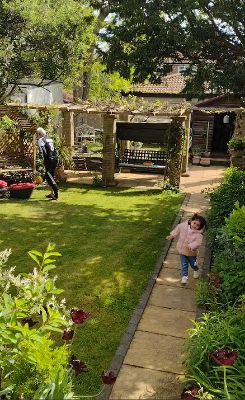
Nature Journal Reflection
Provide time for students to write or draw in their nature journals, reflecting on their experiences, observations, and feelings while interacting with the nature table.
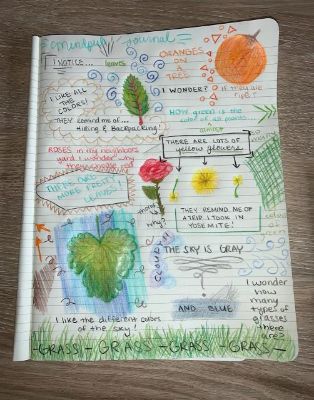
Silent Nature Observation
Encourage students to spend quiet time sitting near the nature table, simply observing and being present in the natural environment, fostering a sense of calm and connection.
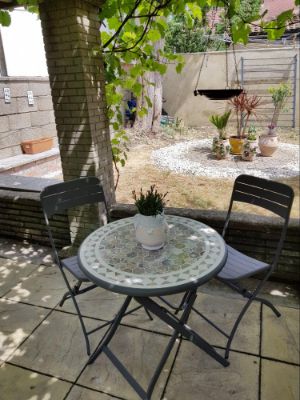
Final Words
Nature tables are valuable educational tools, offering hands-on exploration, artistic expression, scientific inquiry, and mindfulness opportunities. Whether through instructional materials, art projects, scientific experiments, or meditation practices, nature tables connect to the natural world, fostering curiosity, creativity, and a deeper understanding of our environment.
